Don McCullin: Looking for England, BBC Four review - a hard look at home | reviews, news & interviews
Don McCullin: Looking for England, BBC Four review - a hard look at home
Don McCullin: Looking for England, BBC Four review - a hard look at home
Class, conflict, comedy, charm: the great photographer rediscovers his native land
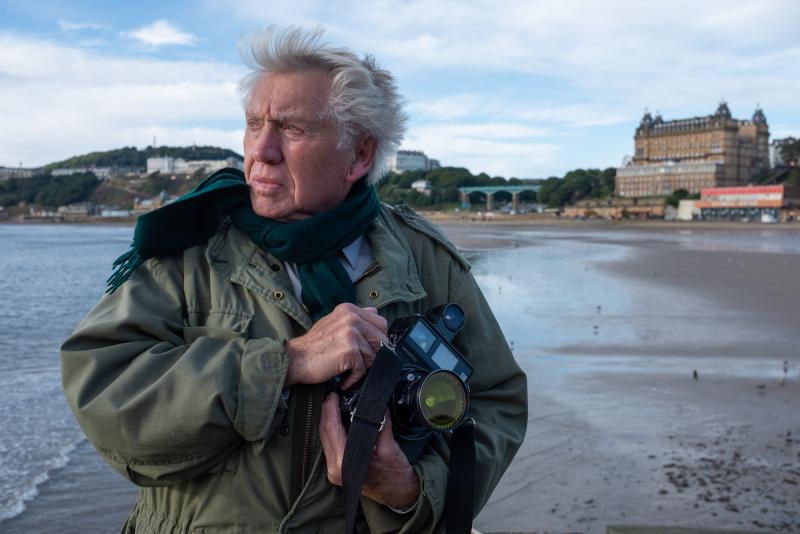
A picture is worth more than a thousand words, never more so than with the photographs of Don McCullin. The octogenarian photographer’s black-and-white imagery made the Sunday Times colour supplement the talk of international media in the 1970s.
In the course of this focused journey, he told us his advice to want-to-be war photographers is that you can photograph war at home. He hated being called a war photographer, and wanted just to be called a photographer. England is close to his heart and he is consciously, poignantly coming to the end of his own journey, as he subtly reminded both himself and us in the course of these domestic travels.
His English journey was a choppy one, each group and place discrete and distinct. Punctuation of a sort was provided by the filming on location in colour; by McCullin’s own photographs, always in black and white; and by the visits to his darkroom at home, bathed in the necessary red light, as he looked at contact sheets (pictured below, by Eoin McLoughlinn) and developed his negatives (lower picture, by Adrian Sibley). It seemed almost womblike, a real shelter, even a sanctuary; he told us how crucial his darkroom time – four or five hours a day when working – was to his well-being. All done by hand, eye and analogue camera: the inadequacy of digital to his practice made explicit. McCullin has always been class-conscious, growing up poor in gangland Finsbury Park. Appropriately then, he started looking for England in Glyndebourne. He changed with a rather endearing clumsiness to formal wear, and sallied forth. He was painstakingly polite to his human subjects, always asking permission to photograph, and engaging in brief social exchanges. But at Glyndebourne he could, quite understandably, not avoid caricature.
McCullin has always been class-conscious, growing up poor in gangland Finsbury Park. Appropriately then, he started looking for England in Glyndebourne. He changed with a rather endearing clumsiness to formal wear, and sallied forth. He was painstakingly polite to his human subjects, always asking permission to photograph, and engaging in brief social exchanges. But at Glyndebourne he could, quite understandably, not avoid caricature.
In Eastbourne, under grey skies, gusts of wind and eventually torrential rain, McCullin was charmingly delighted at the sheer absurdity of the English sea-side holiday. He thought of Monty Python when watching the gallantry of the musicians ensconced in the rain in the bandstand, and their ancient audience. One man, neatly photographed, sat in the wind on the pier eating his fish-and-chips lunch out of a paper bag, delighted by the fresh air as he was cooped up for the rest of the day in his job as a hotel manager.
McCullin’s own energy was set against his implacable pessimism
He went down memory lane as he visited his childhood home in Finsbury Park, the area now very much on the up and up, and recollected his first memorable photograph of the besuited bad boys of the local gang posed by McCullin in a derelict building, his first-ever sale, to the Observer in 1958. But the visit was shaded by sadness: his father had died when he was only 40, his son Don at only 13, a loss still raw. Although McCulllin, in a rare moment of introspection, acknowledged the spur that pain gave him to try to achieve something.
Then back to the East End where the contrast between the poorest living next to the richest, those in the City, still irritated McCullin. A curiously jovial homeless man with a broken ankle, Conroy Rhoden, was to be found on the street in the East End, armed only with a faith in God. Photographed with permission, each subject is named, individuality honoured, dignity intact – unless the subject, so to speak scarpers, as did a druggie young mother, her face already permanently scarred by neglect and abuse. The affection for the world of the East End was palpable, but the pessimism shone through, too: several times the theme of how increasingly bad things were in England, one of the world’s richest countries, emerged, with the nation never more divided than now. McCullin’s own energy was set against his implacable pessimism, which in turn was contrasted to his ability to find sheer enjoyment in ritualistic set pieces. We wandered from Goodwood 1960s nostalgia to the hunt setting out in Church Farm in Wiltshire, with a surprisingly sinister moment there as masked saboteurs followed the horses and hounds.
The affection for the world of the East End was palpable, but the pessimism shone through, too: several times the theme of how increasingly bad things were in England, one of the world’s richest countries, emerged, with the nation never more divided than now. McCullin’s own energy was set against his implacable pessimism, which in turn was contrasted to his ability to find sheer enjoyment in ritualistic set pieces. We wandered from Goodwood 1960s nostalgia to the hunt setting out in Church Farm in Wiltshire, with a surprisingly sinister moment there as masked saboteurs followed the horses and hounds.
And finally out of the Home Counties, to places McCullin has held in his highest esteem for decades. First to Bradford, where everything was and is of interest, once the home to a large Jewish community, now with a major Muslim religious festival in its streets, complete with ceremonial horse and half-naked men beating their chests, where once he had photographed a woman and child in a rat-infested hovel. Then on to Consett in County Durham, destroyed with the disappearance of the steel industry, its traces subsumed now in suburbia. And lastly, island nation once more, to Scarborough, where a middle-aged man came up to tell the photographer that he was one of the boy footballers playing on the beach captured in an image 47 years ago: McCullin thanked him for being the subject for a photograph that had been eminently saleable.
McCullin told us several times he had used photography to find himself. The great strength of his English peregrinations, though, were not his remarks, often blunt, sometimes curiously naïve, but the revelatory images of individual people in a myriad of different social classes and places. Through his gaze, disillusioned, sad, sharp and affectionate, he showed us for good and ill his England of today.
Below: gallery from 'Looking for England', click on image to open
rating
Explore topics
Share this article
The future of Arts Journalism
You can stop theartsdesk.com closing!
We urgently need financing to survive. Our fundraising drive has thus far raised £49,000 but we need to reach £100,000 or we will be forced to close. Please contribute here: https://gofund.me/c3f6033d
And if you can forward this information to anyone who might assist, we’d be grateful.

Subscribe to theartsdesk.com
Thank you for continuing to read our work on theartsdesk.com. For unlimited access to every article in its entirety, including our archive of more than 15,000 pieces, we're asking for £5 per month or £40 per year. We feel it's a very good deal, and hope you do too.
To take a subscription now simply click here.
And if you're looking for that extra gift for a friend or family member, why not treat them to a theartsdesk.com gift subscription?
more TV
 Black Rabbit, Netflix review - grime and punishment in New York City
Jude Law and Jason Bateman tread the thin line between love and hate
Black Rabbit, Netflix review - grime and punishment in New York City
Jude Law and Jason Bateman tread the thin line between love and hate
 The Hack, ITV review - plodding anatomy of twin UK scandals
Jack Thorne's skill can't disguise the bagginess of his double-headed material
The Hack, ITV review - plodding anatomy of twin UK scandals
Jack Thorne's skill can't disguise the bagginess of his double-headed material
 Slow Horses, Series 5, Apple TV+ review - terror, trauma and impeccable comic timing
Jackson Lamb's band of MI5 misfits continues to fascinate and amuse
Slow Horses, Series 5, Apple TV+ review - terror, trauma and impeccable comic timing
Jackson Lamb's band of MI5 misfits continues to fascinate and amuse
 Coldwater, ITV1 review - horror and black comedy in the Highlands
Superb cast lights up David Ireland's cunning thriller
Coldwater, ITV1 review - horror and black comedy in the Highlands
Superb cast lights up David Ireland's cunning thriller
 Blu-ray: The Sweeney - Series One
Influential and entertaining 1970s police drama, handsomely restored
Blu-ray: The Sweeney - Series One
Influential and entertaining 1970s police drama, handsomely restored
 I Fought the Law, ITVX review - how an 800-year-old law was challenged and changed
Sheridan Smith's raw performance dominates ITV's new docudrama about injustice
I Fought the Law, ITVX review - how an 800-year-old law was challenged and changed
Sheridan Smith's raw performance dominates ITV's new docudrama about injustice
 The Paper, Sky Max review - a spinoff of the US Office worth waiting 20 years for
Perfectly judged recycling of the original's key elements, with a star turn at its heart
The Paper, Sky Max review - a spinoff of the US Office worth waiting 20 years for
Perfectly judged recycling of the original's key elements, with a star turn at its heart
 The Guest, BBC One review - be careful what you wish for
A terrific Eve Myles stars in addictive Welsh mystery
The Guest, BBC One review - be careful what you wish for
A terrific Eve Myles stars in addictive Welsh mystery
 theartsdesk Q&A: Suranne Jones on 'Hostage', power pants and politics
The star and producer talks about taking on the role of Prime Minister, wearing high heels and living in the public eye
theartsdesk Q&A: Suranne Jones on 'Hostage', power pants and politics
The star and producer talks about taking on the role of Prime Minister, wearing high heels and living in the public eye
 King & Conqueror, BBC One review - not many kicks in 1066
Turgid medieval drama leaves viewers in the dark
King & Conqueror, BBC One review - not many kicks in 1066
Turgid medieval drama leaves viewers in the dark
 Hostage, Netflix review - entente not-too-cordiale
Suranne Jones and Julie Delpy cross swords in confused political drama
Hostage, Netflix review - entente not-too-cordiale
Suranne Jones and Julie Delpy cross swords in confused political drama
 In Flight, Channel 4 review - drugs, thugs and Bulgarian gangsters
Katherine Kelly's flight attendant is battling a sea of troubles
In Flight, Channel 4 review - drugs, thugs and Bulgarian gangsters
Katherine Kelly's flight attendant is battling a sea of troubles

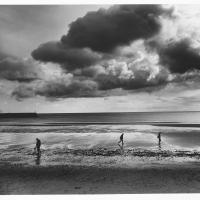
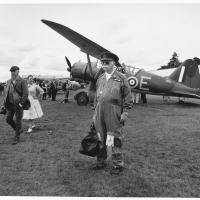
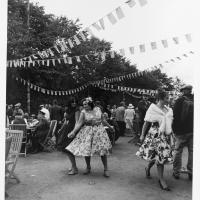
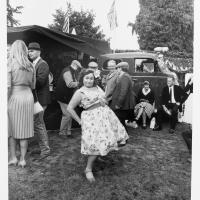
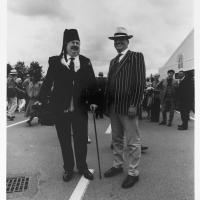
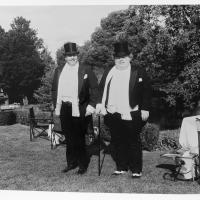
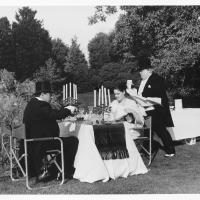
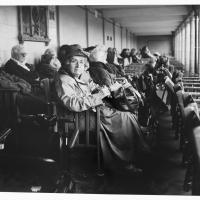
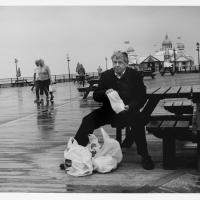
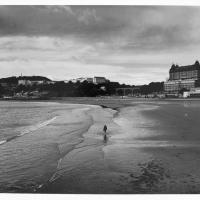
Add comment